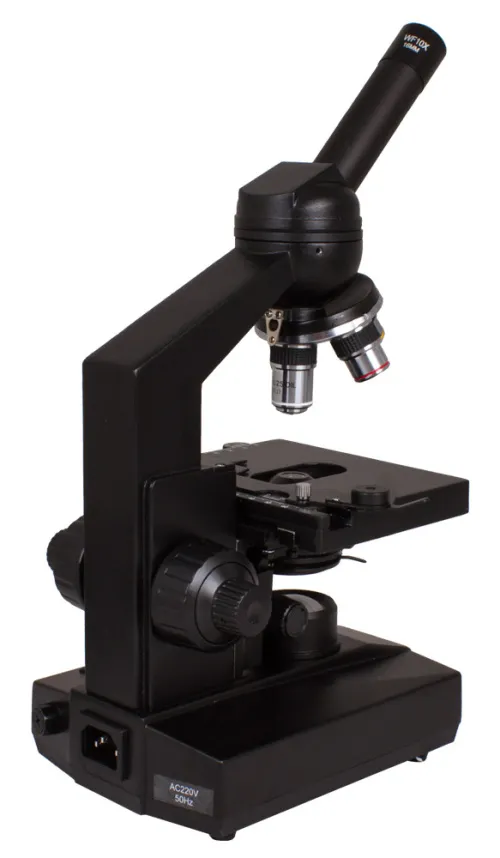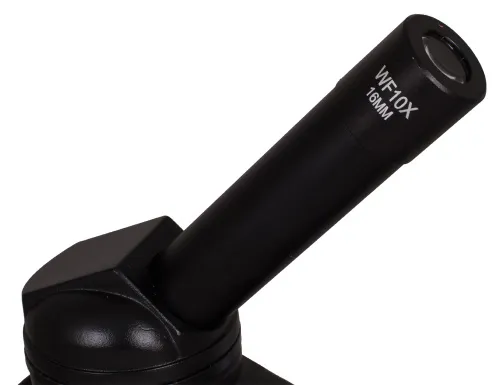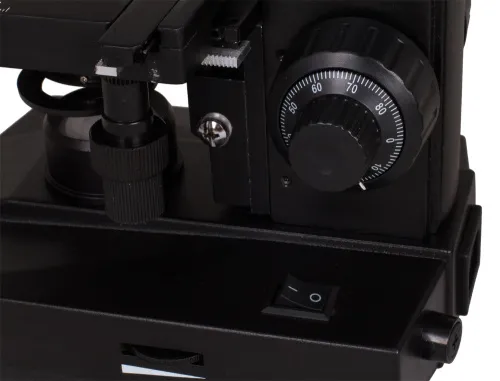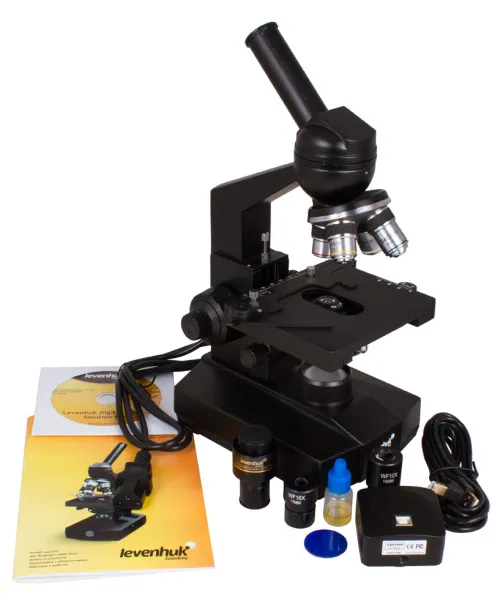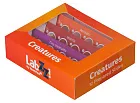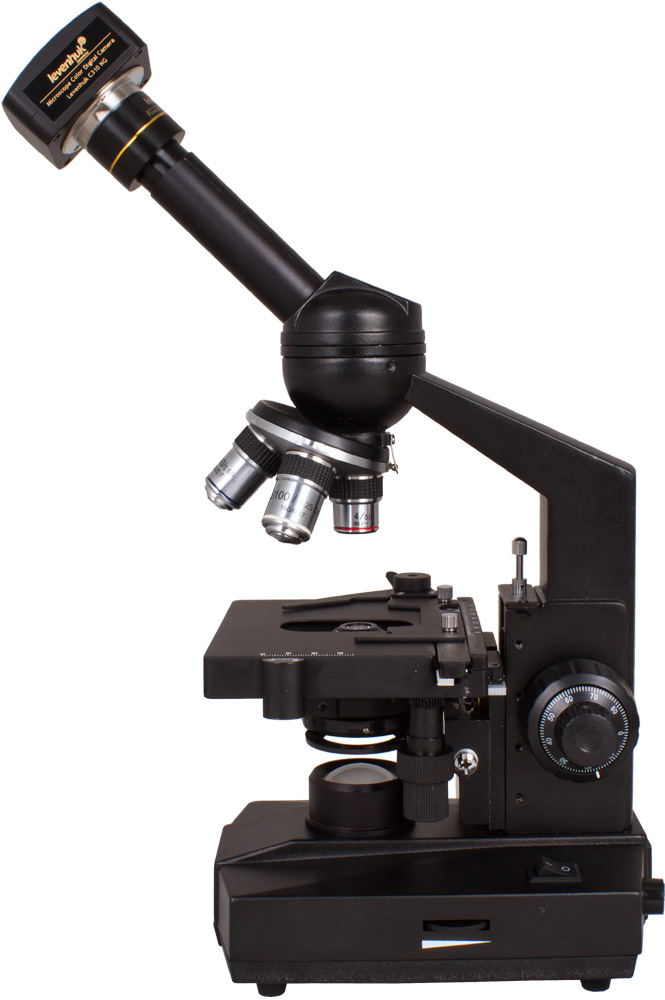Levenhuk D320L 3.1M Digital Monocular Microscope - Exhibition Item
Professional digital laboratory microscope
| Product ID | 76185 |
| Brand | Levenhuk, Inc., USA |
| Warranty | lifetime |
| EAN | 2400000042488 |
| Package size (LxWxH) | 26x23x41 cm |
| Shipping Weight | 3.75 kg |
Special price! Further discounts or special offers cannot be applied in this case.
Exhibition copy.
Open Box item. A new, unused item with absolutely no signs of use. The item is missing its original packaging or the packaging is damaged.
Otherwise, the product is fully functional.
Exhibition copies cannot be exchanged or returned for a refund. The Levenhuk D320L 3.1M Digital Monocular Microscope is ideal for biochemical, pathologo-anatomic, cytologic, hematologic, urologic, dermatologic, biologic, and general clinical research in medical laboratories. This series is intended for making observations and morphological studies of specimens in transmitted light using the bright field method. It is ideal for medical laboratories and colleges that cannot afford the binocular model (1.5 times more expensive). The Levenhuk D320L is equipped with a built-in illumination bulb that allows you to adjust the brightness. Other features: Immersion, two-lens 1.25 Abbe condenser and four achromatic objectives. The Levenhuk D320L is a professional laboratory microscope. With its affordable price, it features a coordinate moving stage, an Abbe condenser, integrated coarse and fine adjustment screws, sharpness adjustment, and wide field eyepieces. Included in the package is a Levenhuk D320L Digital Camera, 3M pixels, USB 2.0 exclusively designed for use with the microscope. It allows making a digital picture of an object as observed in the microscope, transferring it to the PC and saving it in the desired format. Levenhuk software, which allows viewing and editing of the received images, is included in the package. The latest version of Levenhuk software for Windows supports eight languages: English, French, German, Polish, Russian, Simplified Chinese,Traditional Chinese, Turkish. USB cable is used as camera power supply and for connection with a PC. Compatible OS: Windows, Linux, Mac OS. The kit includes: * Caution: Please refer to the specifications table for the correct mains voltage and never attempt to plug a 110V device into 220V outlet and vice versa without using a converter. Remember that mains voltage in the U.S. and Canada is 110V and 220–240V in most European countries. Some things you can see under a microscope: Levenhuk D320L 3.1M Digital Monocular Microscope is also compatible with other Levenhuk digital cameras (additional cameras are purchased separately). Levenhuk cameras are installed in the eyepiece tube instead of an eyepiece.











| Product ID | 76185 |
| Brand | Levenhuk, Inc., USA |
| Warranty | lifetime |
| EAN | 2400000042488 |
| Package size (LxWxH) | 26x23x41 cm |
| Shipping Weight | 3.75 kg |
| Type | biological, digital, light/optical |
| Microscope head type | monocular |
| Optics material | optical glass |
| Magnification, x | 40 — 1600 |
| Eyepiece tube diameter, mm | 23.2 |
| Eyepieces | WF10x, WF16x |
| Objectives | 4x/0.1; 10x/0.25; 40x/0.65; 100x/1.25 (immersion) |
| Revolving nosepiece | for 4 objectives |
| Condenser | Abbe N.A. 1.25 |
| Diaphragm | iris |
| Focus | coaxial with coarse and fine adjustment |
| Body | metal, painted |
| Illumination | halogen |
| Power supply | 220V/50Hz |
| Additional | built-in IR filter |
| Image | *.jpg, *.bmp, *.png, *.tif, *.gif, *.psd, *.ico, etc. |
| Application | laboratory/medical |
| Illumination location | lower |
| Research method | bright field |
| Digital camera included | ✓ |
| Megapixels | 3 |
| Sensor element | 1/2" |
| Pixel size, μm | 3.2x3.2 |
| Video format | *.wmv, *.h264, *.avi (record); *.wmv, *.asf, *.avi, *.mp4, *.m4v, *.3gp, *.3g2, *.3gpp, *.mov, *.mkv, *.flv, *.rm, *.rmvb, *.h264, *.h265 (read only) |
| Spectral range, nm | 400–650 |
| White balance | automatic, manual |
| Exposure control | automatic, manual |
| Sensitivity, V/lux-sec@550nm | 1.5 |
| Frame rate | up to 11 frames per second |
| Dynamic range, dB | 75 |
| Usage location | eyepiece tube (replaces an eyepiece) |
| Method of exposure | ERS (Electronic Rolling Shutter) |
| Software, drivers | USB 2.0 driver, Levenhuk camera software |
| Programmable options | brightness, image size, shutter time |
| Output | 480 Mbps, USB 2.0 |
| System requirements | OS Windows XP/Vista/7/8/10 (32 and 64 bit), MAC 10.6-10.10, Linux 2.6*; 2.8GHz Intel Core 2 and above, USB 2.0 |
| Camera power supply | via USB Cable 2.0 |
| Camera operating temperature range, °С | -30...+70 |
and downloads
We have gathered answers to the most frequently asked questions to help you sort things out
Find out why studying eyes under a microscope is entertaining; how insects’ and arachnids’ eyes differ and what the best way is to observe such an interesting specimen
Read this review to learn how to observe human hair, what different hair looks like under a microscope and what magnification is required for observations
Learn what a numerical aperture is and how to choose a suitable objective lens for your microscope here
Learn what a spider looks like under microscope, when the best time is to take photos of it, how to study it properly at magnification and more interesting facts about observing insects and arachnids
This review for beginner explorers of the micro world introduces you to the optical, illuminating and mechanical parts of a microscope and their functions
Short article about Paramecium caudatum - a microorganism that is interesting to observe through any microscope




